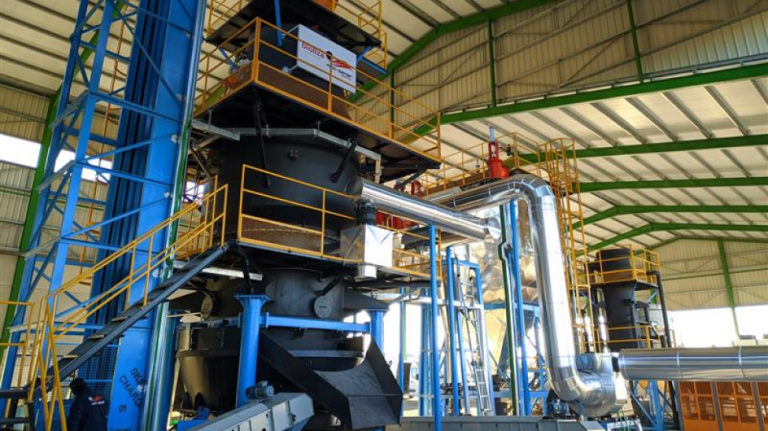Application of biomass as an air conditioning system in buildings
We continue with the introduction to the biomass (see first part here). Biomass boilers are compact equipment designed specifically for use, whether domestic in single-family homes, residential or commercial buildings, there are also models for industrial facilities. For domestic or commercial heating applications, these devices are low to medium power, up to 150-200 kW.

Air conditioning systems powered by biomass are environmentally friendly, they do not generate odors like diesel, nor can they produce dangerous leaks like gas. Their operation and maintenance are very simple, since they incorporate electronic control systems to manage the installation. For example, switching on can be done manually or remotely via a mobile phone message. The cleaning of the equipment is fully automatic, the only operation to be carried out by the user is the removal of the ashes.
Depending on the quality of the fuel and the boiler, ash can account for up to 1% of the biomass consumed, which makes ash removal a rare task.
These boilers are highly resistant to wear, have a long useful life and are practically silent because they do not need a burner to blow in pressurized air to pulverize the fuel, like diesel boilers. In addition, they have a high energy performance, between 85-92%.
Environmental impact of biomass
Although biomass is the only energy source that provides a balance of CO2 favorable (as long as biomass is obtained in a renewable and sustainable way, the resource is consumed more slowly than the Earth's capacity to regenerate), this large-scale renewable energy source produces a series of substances pollutants harmful to the environment.

These polluting substances are mainly:
Particles: The particles obtained in a combustion process are fly ash, a consequence of the existence of non-combustible substances in the biomass of origin. The risk that is run in the case of biomass is that, on numerous occasions, it is used uncontrolled as a source of energy, with many small combustion equipment for domestic use that do not incorporate retention systems for said particles. .
Carbon dioxide and monoxide: In the case of biomass, unlike what happens with fossil fuels, the carbon dioxide generated in the combustion process is returned to the atmosphere, from where it was taken in the process of its generation.
According to this, theoretically, the use of biomass as fuel does not increase the carbon dioxide content of the atmosphere and therefore does not contribute to the greenhouse effect. The reality is that, if the rate of use of biomass as fuel becomes very high, being higher than the rate of biomass production, the amount of carbon dioxide in the air will increase.
In the case of carbon monoxide, it should be noted that the emissions produced when burning biomass are higher than when burning coal.
Other gaseous emissions: The incineration of urban waste can lead to the emission of highly polluting substances. The presence of plastics and chlorine compounds in waste gives rise to the formation of very toxic substances, especially dioxins and hydrochloric acid.
The combustion of wood gives rise to emissions of a wide variety of organic compounds, including substances classified as carcinogenic, such as benzopyrene and polycyclic aromatic hydrocarbons.
Solid waste: In the combustion of biomass, ashes are obtained as solid products. The retention, extraction and treatment of these substances can contaminate water and soil, due to the presence of toxic substances among the compounds that make up the ashes, such as lead or cadmium, requiring exhaustive control in the different stages that constitute their treatment.
Liquid waste: Effluents with suspended solids and metal compounds, which have to be evacuated outside the facilities that work with biomass, are those that can cause water contamination, making it necessary to control and treat them. There is a large amount of liquid effluents with a high concentration of nutrients that are used as fertilizers, or as raw materials in the chemical industry, but we must not lose sight of the fact that those quantities that cannot be used in these applications can cause damage. in the environment.
In the gasification and pyrolysis processes, special attention must be paid to the different compounds that are produced while the process develops, including acetic acid, phenol, and water-insoluble oils such as toluene, benzopyrene, as well as a wide variety of non-aromatic organic compounds.
Many of these compounds have a negative impact on human health, being classified as carcinogenic.
If you want to learn more about this and other energy generation systems through renewable resources, do not hesitate to sign up for our Professional Master in Efficient Management of Renewable Energy.

































